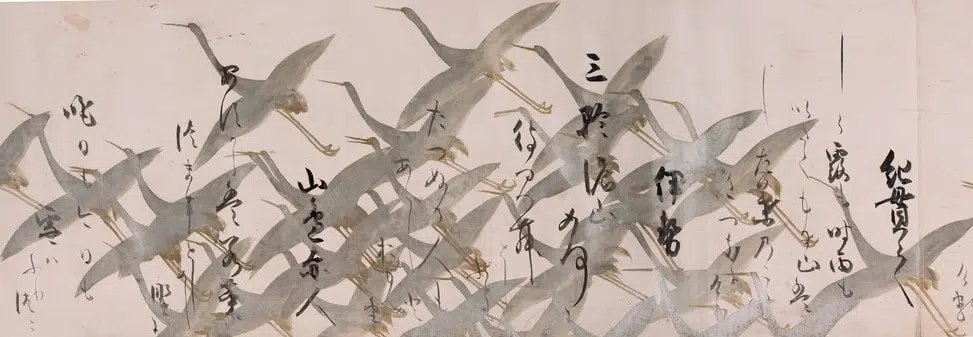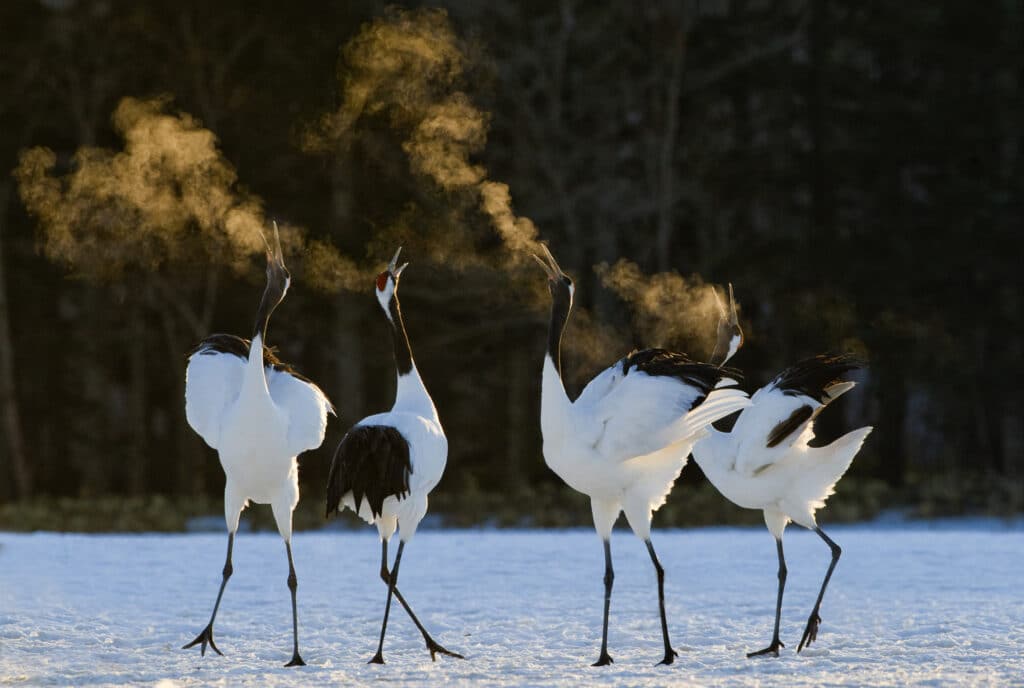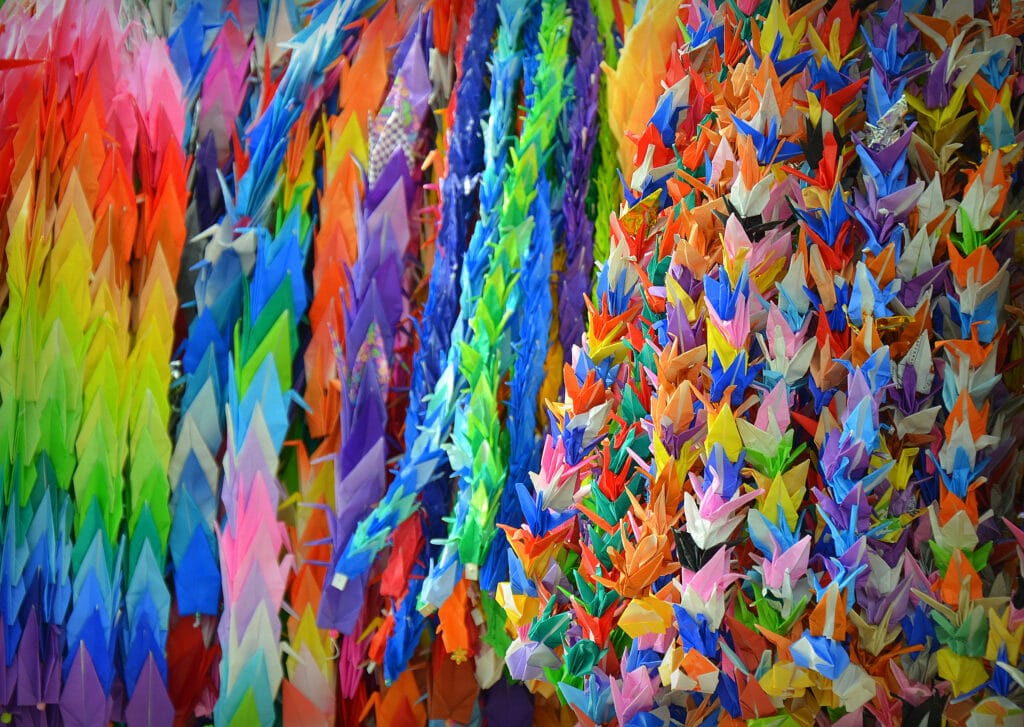Enfolded into culture: the symbolism of cranes in Japanese art

From art and origami to conserving the real thing, cranes have always had a place at the heart of Japanese culture. John Fanshawe explores the many ways this iconic bird has offered inspiration and hope.
A prized collaboration by the artist Tawaraya Sōtatsu and calligrapher Hon’ami Kōetsu, Anthology with Cranes, is held in the Kyoto Museum of Art. A scroll, the work is almost 14 m in length, and the cranes – beautifully rendered in gold and silver – stand and fly, alone and in flocks. Dating from the 17th century, the piece is revered as a celebration of Sōtatsu and Kōetsu’s friendship, and because of the core role cranes play in Japanese and wider Asian culture. With simple elegant lines Sōtatsu fills the space with the effervescent energy cranes always seem to express.
Taken more than 400 years later, David Tipling’s wonderful image of Red-crowned Cranes Grus japonensis dancing and bugling, their breath catching the sun and condensing in the chill air of Hokkaido island, captures an ageless scene. Only the sound is missing, of course, though listening to recordings on the Xeno-canto website allow a sense of how the sight, calls and movements of these remarkable birds has flooded people’s imaginations for as long as we have shared common ground.
Although Red-crowned Cranes remain Vulnerable to extinction, the story of their recovery on Hokkaido and the development of the marshes at Kushiro as a national park has been a major success. Fewer than 20 resident birds were present in the 1920s, but numbers have now grown to an average annual population of over 1,500. The Wild Bird Society of Japan (BirdLife Partner) has played a key role in supporting action for the cranes and opened a visitor centre at the Tsurui-Ito Tancho Sanctuary in 1987 – an Important Bird & Biodiversity Area and popular site with ecotourists. The close interweave of natural and cultural values in Japan has played a key role in creating momentum.
Above: An extract from Anthology with Cranes, 17th century, by painter Tawaraya Sōtatsu and calligrapher Hon’ami Kōetsu

Few of us who have held paper have not, at some stage, folded a bird, or some bird-form, a pair of wings, and flown them, literally, or with arms whirling to create the magic of flight. Cranes are core to origami, and the tradition of folding a 1,000, or senzaburu, dates back to a Confucian belief that they could live to be 1,000 years old. To fold so many is to conjure up the long-standing association between these remarkable birds, longevity, happiness and good fortune.
Cranes are also closely associated with peace in Japan. In 1955, a schoolgirl named Sadako Sasaki, who had miraculously survived the atomic bomb which had devasted Hiroshima a decade earlier, fell ill with leukaemia. When a school friend visited her hospital bed bearing a gift of origami paper, she also told Sadako of senzaburu and its association with good fortune. Determined to recover, Sadako began to fold cranes, and reputedly reached 644 before succumbing to the relentless radiation cancer.
Her story soon spread, and schoolchildren from all around Japan and overseas gave money to build a monument in her memory at the Hiroshima Peace Park. A small bell hangs there, donated by the first Japanese Nobel Laureate, Hideki Yukawa. People still hang paper cranes below the bell, both to celebrate Sadako’s life, and the enduring association between cranes and peace.

Stay up to date
Sign up to receive the latest bird conservation news. You’ll also receive updates about our projects, science and other ways to get involved including fundraising.
Thank you for your support, we are committed to protecting your personal information and privacy. For more information on how we use your data, please see our Privacy Policy. You can unsubscribe from emails at any time by using the link in the footer of any email from us.

